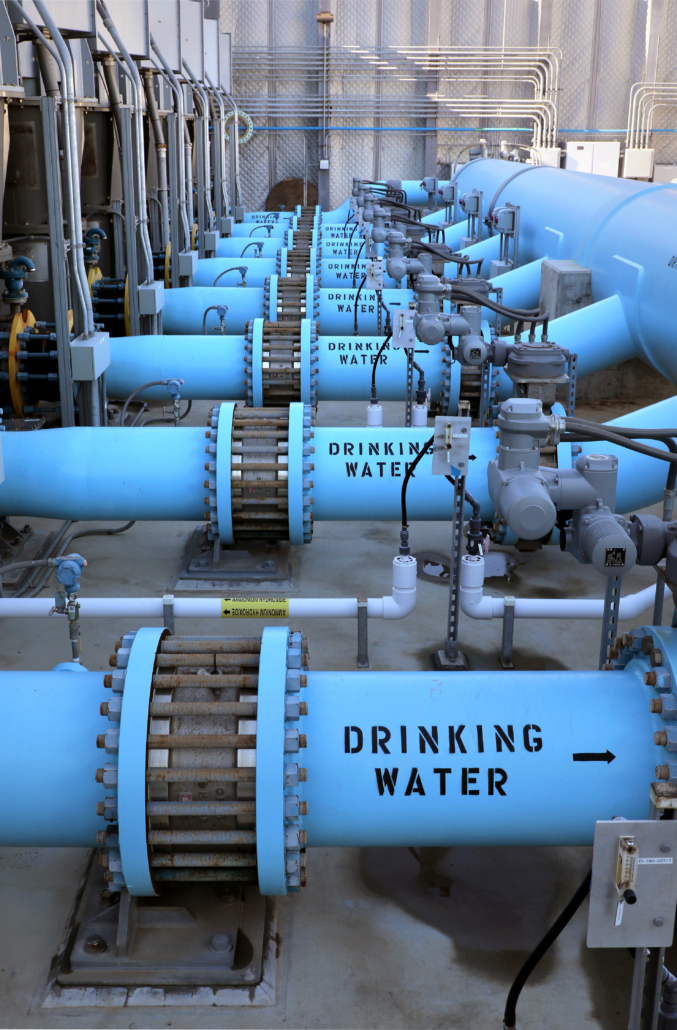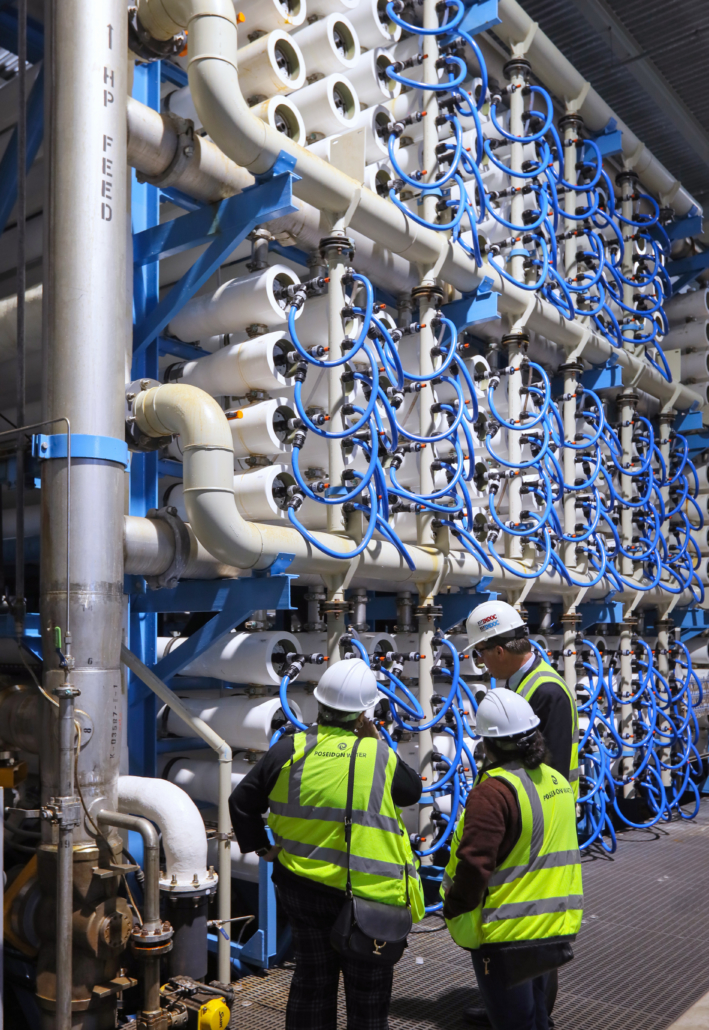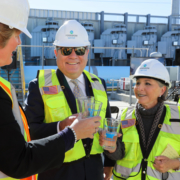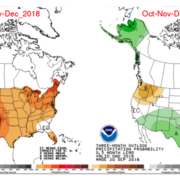San Diego County marked a significant milestone in regional water supply reliability Thursday at the Claude “Bud” Lewis Carlsbad Desalination Plant – the delivery of 40 billion gallons of drinking water during its first three years of commercial operations.
This is enough water to fill 800 million bathtubs, or 1,820 Bellagio Las Vegas fountains.
The plant, which launched its commercial operations in December 2015, provides San Diego County with 50 million gallons of locally-controlled, climate-resilient and high-quality water a day, helping to minimize the region’s vulnerability to droughts.

The Carlsbad Desalination Plant has delivered 40 billion gallons of fresh, clean drinking water during its three years of operation. Photo: Water Authority
Former U.S. Sen. Barbara Boxer, a long-time champion for water reliability projects like the Carlsbad facility, spoke at the third anniversary event on Dec. 13.
“This facility has helped protect public health and safety and the economy during the worst recorded drought in California history,” according to Boxer’s prepared remarks. “Here in California, we need to have a multifaceted water plan that includes conservation, recycling, recharging underground aquifers, and catching water as it falls.
“The Carlsbad Desalination Plant is a model for how desalination should be done in California, and more facilities modeled after Carlsbad are certainly going to be needed,” said Boxer. Boxer said in arid regions like Southern California where most of the population lives along the coast, seawater desalination is the only way to ensure residents’ water needs are met under extreme conditions brought on by climate change.
Most advanced and efficient desalination plant worldwide
The Carlsbad desalination facility is the largest, most technologically advanced and energy-efficient desalination plant in the nation. It was made possible through an innovative public-private partnership between Poseidon Water and the San Diego County Water Authority. The plant enhances water supply reliability in the San Diego region by meeting nearly 10 percent of the region’s water demand – or about a quarter of all the water generated in the county.
“We’re just thrilled,” said Sandra Kerl, deputy general manager of the San Diego County Water Authority. “It’s hard to believe it’s been three years and that we’re on the 40 billionth gallon. To have been a part of a project that provides a service that all of us can’t live without is really quite gratifying.”
Desalination is a cornerstone of the Water Authority’s strategies. Regardless of weather conditions, the Carlsbad plant produces a core supply of water day-in and day-out.

Visitors tour the Carlsbad desalination plant during Thursday’s anniversary event. Photo: Water Authority
Since the plant opened, it has also proved to be an educational and inspiring tool for water innovation across the country and throughout the world. Tour groups visit the plant monthly to learn about the plant’s operation and the partnership between Poseidon Water and the Water Authority.
At the Dec. 13 event, participants toasted the success of the plan with glasses filled with fresh, desalinated water from the plant. “A toast to Pacific on Tap and continued water reliability in San Diego County thanks to desalinated water!” said Carlos Riva, CEO of Poseidon Water.
For more information, go to the project website, carlsbaddesal.com, or the Water Authority’s website, sdcwa.org.
READ MORE:








